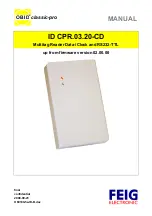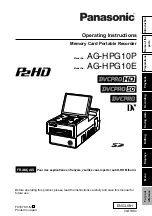
PCI-1002 Series Card
12-bit, 110 kS/s or 44 kS/s Multi-function Board
User Manual, Ver. 3.0, Jun. 2018, PMH-015-30, Page: 46
6.2.1
Section1
Although there are 128 I/O ports used by the on-board PCI interface controller, only one register is
used in real applications!! Users should keep the other registers from being modified! The PCI
interrupt control register (
4Ch
) controls the interrupt sent to your system. The register is set to
“disable interrupt” after power-on or a hardware reset signal. Thus, no interrupt will be generated
before this register is activated even if user enables the add-on interrupt! In order to enable the
PCI-interrupt, always write
43h
to this register. Write
03h
to this register if you want to disable the
PCI interrupt.
Here’s the format of the PCI interrupt control register:
Bit 31 - Bit 7
Bit 6
Bit 5 -Bit 3
Bit 2
Bit 1 - Bit 0
Not used
Interrupt Enable
Not used
Interrupt Flag
Interrupt Select
Bit 6:
Write a ‘1’ to enable the PCI-interrupt and a ‘0’ to disable PCI interrupt.
Bit 2:
This bit is readable but can’t be written. A ‘1’ indicates that Add-on has generated interrupt,
‘0’ means that add-on hasn’t generated interrupt.
Bit 1-0:
Always write 1 to these two bits.
Notes:
1. Because PCI-1002 series supports “Plug&Play”, the interrupt number will be automatically assigned by your
system. Use the standard PCI mechanism or the software in our library to find out the interrupt number.
2. If your system supports “Shared IRQ”, several peripherals will share the same IRQ at the same time. You
must use Bit-2 to find out if this IRQ was generated from your PCI-1002 series.
3. For more information about the PCI interrupt control, refers to the PLX-9050 user reference manual.
















































